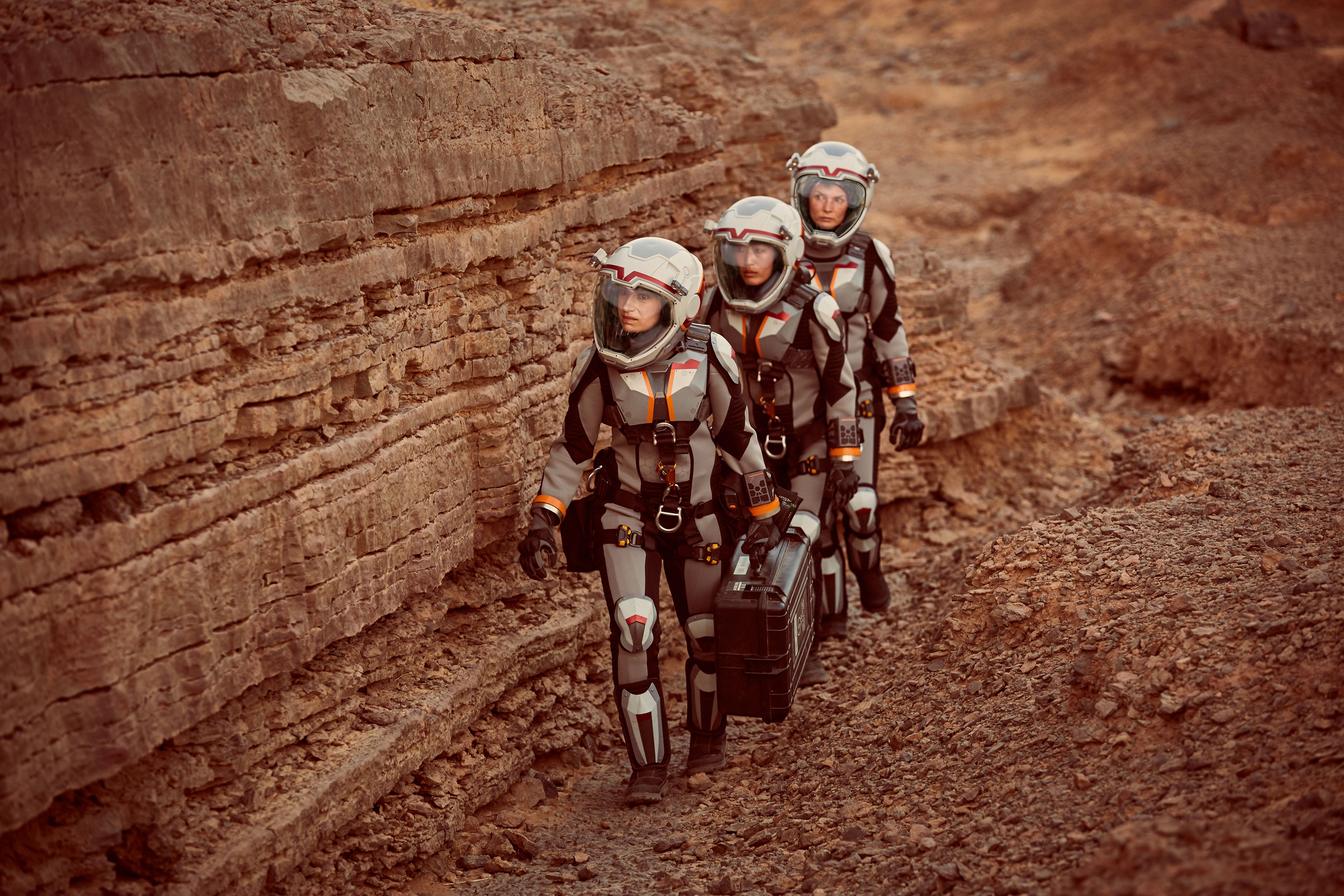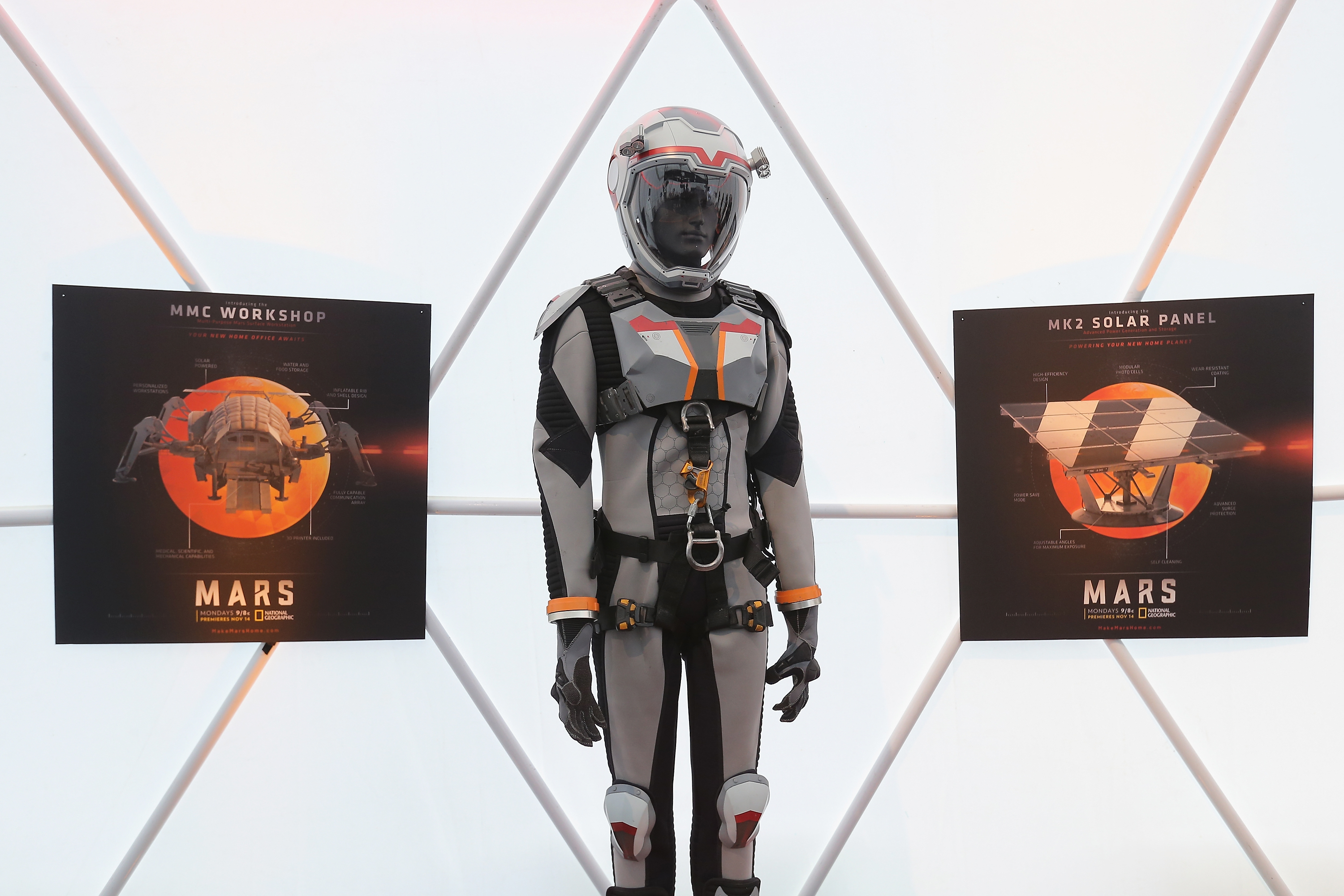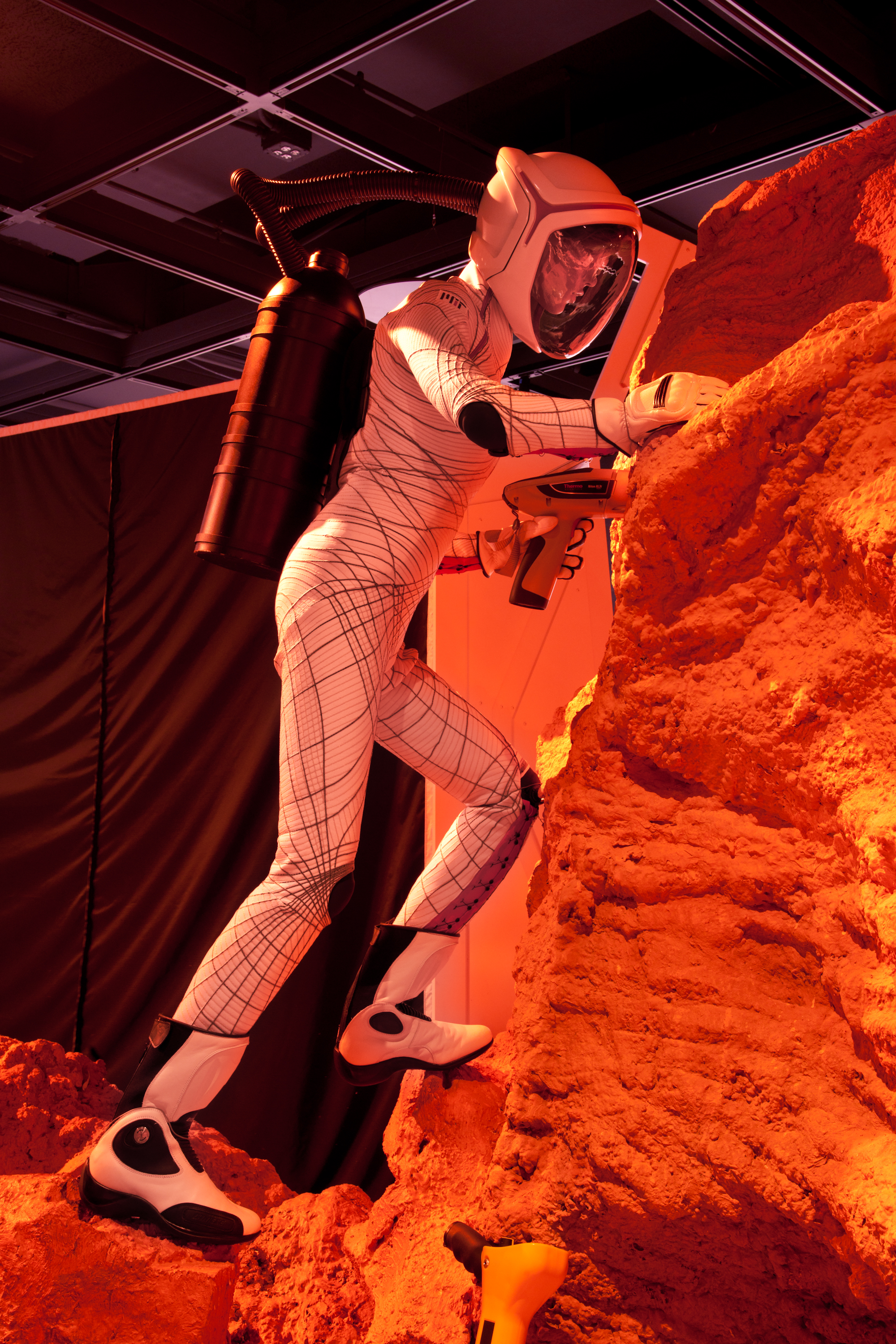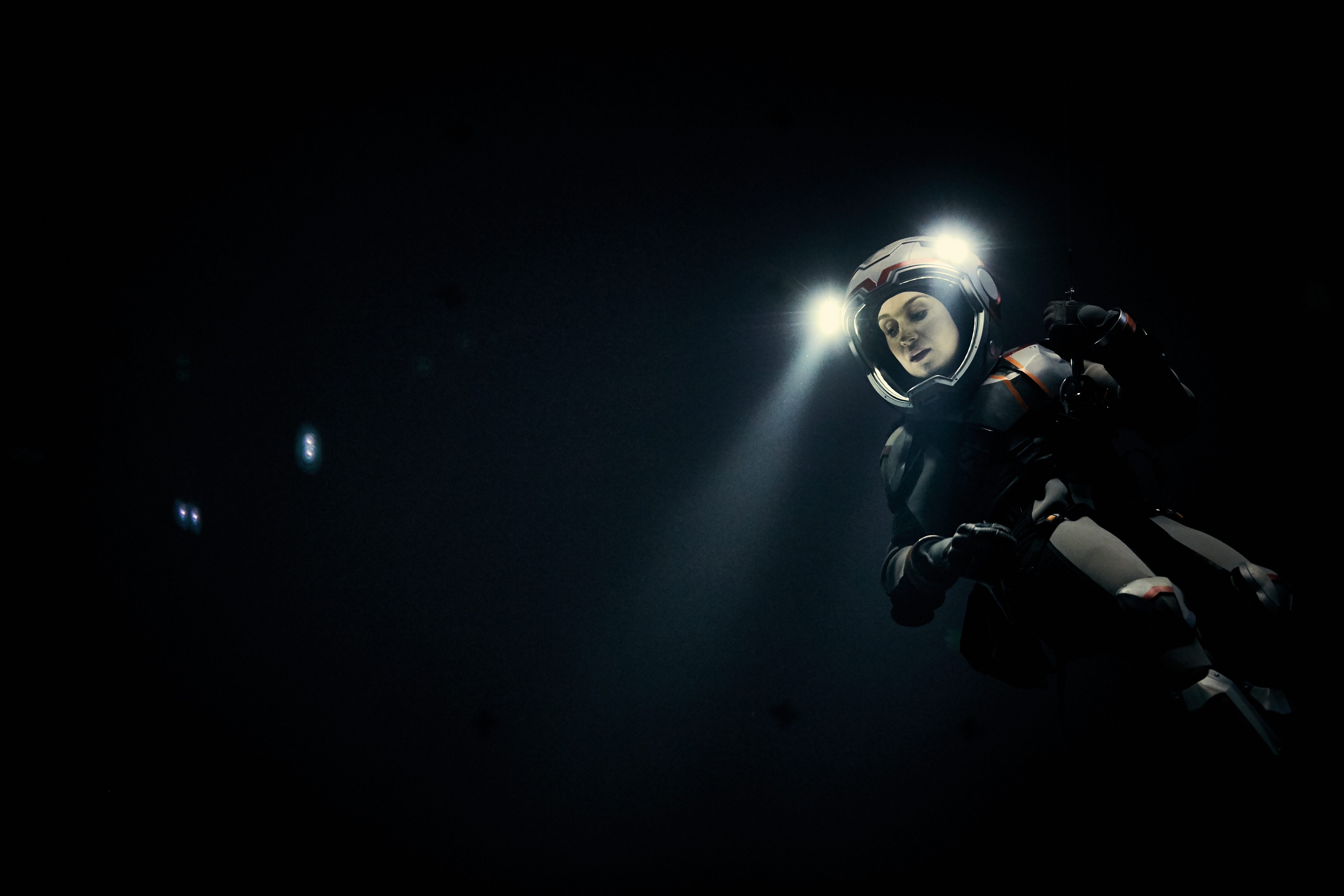That 'Mars' Look: Designer Draws on Real Tech for Futuristic Spacesuits

Like most of the technology featured in National Geographic's "Mars" miniseries, the futuristic spacesuits worn by the Mars colonists are based on realistic ideas conjured up by scientists and engineers today.
"Mars" tells a fictional story about the first humans to land on the Red Planet in the year 2033. Though we have yet to send people to Mars, researchers at NASA and other institutions have been working on concepts for Mars spacesuits for more than a decade.
Italian costume designer Daniela Ciancio combined extensive research with her own creative talent to carefully craft a spacesuit costume for the Mars crew that was as realistic as possible. ['Mars': National Geographic Channel's Epic Miniseries in Pictures]

Ciancio told Space.com that her main inspiration was the Biosuit, a skintight spacesuit designed by researchers at MIT. Biosuits are pressurized like existing spacesuit designs, but they aren't as big and bulky. For traditional spacesuit designs to be pressurized, they are filled with air, like a human-shaped balloon. But the Biosuit achieves that same pressurization without the added air by applying pressure directly to the skin with a tightly fitted jumpsuit.
Not only is the Biosuit concept practical for astronauts who need to work comfortably and efficiently on Mars, but it also appealed to Ciancio's taste and style as a costume designer. "I like to work on the shape of human muscles," Ciancio told Space.com. "I tried to combine new research with Michelangelo," she added. [BioSuit: A Skintight Spacesuit for Astronauts (Photos)]
Ciancio spent time researching spacesuit designs by NASA and SpaceX in addition to the Biosuit to get as much insight as possible into the best ways to dress an astronaut. "Of course, everything is based on reality," she said. "It must be credible."

The skintight spacesuits Ciancio designed for "Mars" had to be custom-made for every individual actor. Wiggle room is not an option for spacesuits that are pressurized by skin-to-suit contact. To achieve that necessary skintight appearance, Ciancio made the suits out of a rubbery material called neoprene, which is also used in drysuits for divers on Earth.
Get the Space.com Newsletter
Breaking space news, the latest updates on rocket launches, skywatching events and more!
Neoprene is lightweight, strong and comfortable — and it provides thermal insulation, making it ideal for hard-working astronauts on Mars, which is much colder than Earth. Ciancio said she liked working with neoprene because it "underlines the shape of the human muscles."

Ciancio also designed the astronauts' helmets, which needed to be practical for filming while still looking as realistic as possible. This was a bit of a technological challenge, Ciancio said. Each helmet contains headlights, a microphone and speakers to allow the actors to easily communicate on the set, and even a small fan to cool them down.
A built-in battery pack powers all of the devices inside the helmet. Several scenes of "Mars" were filmed in Morocco under a hot sun, so the helmet fans were crucial for keeping the actors from overheating.
To give her designs a more realistic appearance, Ciancio connected the helmet and backpack with a tube. An oxygen tank inside the backpack would allow the Mars explorers to breathe, because the air on Mars is far from breathable.
Of all the aspects of the suit that required technological innovation, Ciancio said the biggest design challenge was creating gloves that connect to the suit and could be taken off and put back on without compromising the air-tight seal.
Because Ciancio didn't have the scientific background needed to make a real Mars spacesuit, she sent her designs to the scientific consultants who worked on the "Mars" series. But with all the research she did before creating the suits, getting the necessary approval from the scientists was a piece of cake.
To see Ciancio's spacesuit design in action, catch the grand finale of "Mars" Monday (Dec. 19) at 9 p.m. EST on the National Geographic Channel. For more information about the series and the prospect of a future Mars colony, check out National Geographic's multimedia website for the International Mars Science Foundation.
Email Hanneke Weitering at hweitering@space.com or follow her @hannekescience. Follow us @Spacedotcom, Facebook and Google+. Original article on Space.com.
Join our Space Forums to keep talking space on the latest missions, night sky and more! And if you have a news tip, correction or comment, let us know at: community@space.com.

Hanneke Weitering is a multimedia journalist in the Pacific Northwest reporting on the future of aviation at FutureFlight.aero and Aviation International News and was previously the Editor for Spaceflight and Astronomy news here at Space.com. As an editor with over 10 years of experience in science journalism she has previously written for Scholastic Classroom Magazines, MedPage Today and The Joint Institute for Computational Sciences at Oak Ridge National Laboratory. After studying physics at the University of Tennessee in her hometown of Knoxville, she earned her graduate degree in Science, Health and Environmental Reporting (SHERP) from New York University. Hanneke joined the Space.com team in 2016 as a staff writer and producer, covering topics including spaceflight and astronomy. She currently lives in Seattle, home of the Space Needle, with her cat and two snakes. In her spare time, Hanneke enjoys exploring the Rocky Mountains, basking in nature and looking for dark skies to gaze at the cosmos.









